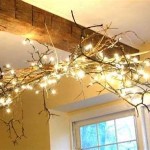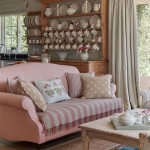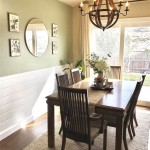How To Decorate a Daycare
Decorating a daycare requires careful consideration of both aesthetics and functionality. The environment should be stimulating and engaging for children while prioritizing safety and practicality. This guide offers practical advice on how to create a welcoming and developmentally appropriate space.
Color Psychology and Selection: Color plays a crucial role in a child's mood and behavior. Bright, primary colors can be stimulating and energetic, suitable for active play areas. Softer pastel shades create a calming atmosphere, ideal for nap time or quiet activities. Neutral colors like beige or light gray provide a balanced backdrop, allowing colorful toys and artwork to stand out. Consider using a combination of colors to create different zones within the daycare.
Theme Selection and Implementation: A cohesive theme can tie the daycare's decor together and create a sense of unity. Popular themes include nature, outer space, or the alphabet. However, avoid overly stimulating or character-driven themes that may become dated quickly. The theme can be incorporated through wall murals, decorative elements, and learning materials. Flexibility is key; themes should be easy to update or change as children's interests evolve.
Furniture Selection and Arrangement: Child-sized furniture is essential for comfort and safety. Choose sturdy, easy-to-clean materials like plastic or wood. Rounded edges and non-toxic finishes are crucial safety considerations. Arrange furniture to create defined areas for different activities, such as a reading nook, a building block area, and an art station. Ensure ample space for movement and play, avoiding overcrowding.
Wall Decor and Displays: Walls offer opportunities for both decoration and learning. Use educational posters, artwork created by the children, and interactive displays. Chalkboards or whiteboards provide spaces for creative expression and learning activities. Rotating displays regularly keeps the environment fresh and engaging, encouraging children's ongoing curiosity.
Lighting Considerations: Natural light is ideal for daycare settings. Maximize natural light by keeping windows unobstructed. Supplement with soft, diffused artificial lighting to avoid harsh shadows. Different lighting levels can be used to create distinct moods and facilitate different activities. Dimmer switches can be useful for nap time or quiet story time.
Flooring Choices and Safety: Flooring should be durable, easy to clean, and comfortable for children to sit and play on. Carpet tiles are a popular choice as they can be easily replaced if damaged. Rubber flooring provides cushioning for active play areas. Ensure all flooring materials are non-toxic and meet safety standards. Area rugs can define specific areas and add warmth and visual interest.
Storage Solutions and Organization: Effective storage is crucial in maintaining a tidy and organized daycare. Open shelving units allow children to easily access toys and materials. Clearly labeled containers promote organization and self-help skills. Designated storage areas for different items prevent clutter and facilitate cleanup time.
Safety Measures and Childproofing: Childproofing is paramount in a daycare setting. Cover electrical outlets, secure window blinds, and anchor heavy furniture to the walls. Ensure all materials used are non-toxic and free of sharp edges. Regularly inspect the environment for potential hazards and address them promptly. A first-aid kit should be readily accessible.
Creating Designated Activity Zones: Dividing the daycare into distinct activity zones promotes organized play and learning. A reading nook with comfortable seating and a variety of books encourages literacy. A building block area with ample space and a range of blocks fosters creativity and problem-solving skills. An art station with easily accessible supplies encourages artistic expression. Clear boundaries between zones help children understand expectations and transition smoothly between activities.
Incorporating Sensory Elements: Sensory activities play a crucial role in child development. Incorporate sensory elements throughout the daycare to engage different senses. A sensory table filled with sand, water, or rice provides tactile exploration. Soft textiles, textured toys, and musical instruments offer auditory and tactile stimulation. A calming corner with soft lighting and comfortable seating provides a space for children to regulate their sensory input.
Maintenance and Hygiene Practices: Maintaining a clean and hygienic environment is essential for the health and safety of children. Establish a regular cleaning schedule for all surfaces, toys, and equipment. Use child-safe cleaning products and ensure proper ventilation. Handwashing stations should be easily accessible and stocked with soap and paper towels. Encourage frequent handwashing among children and staff.
Outdoor Play Area Design: If an outdoor play area is available, design it with safety and age-appropriateness in mind. Provide a variety of play equipment, such as swings, slides, and climbing structures. Ensure the ground surface is soft and absorbent to minimize the risk of injury. Shade structures protect children from the sun during outdoor play. Regularly inspect the outdoor area for potential hazards and maintain it in good condition.

How To Decorate A Daycare Center Procare Solutions
Daycare Ideas Interior Design Inspiration For Your Childcare Center

How To Decorate A Daycare Center Procare Solutions

Daycare Ideas Interior Design Inspiration For Your Childcare Center

1 Ultimate Guide For The Best Childcare Design

Daycare Decor Home Rooms Crafts

Daycare Ideas An Ideabook By Kellbell100

How To Decorate A Daycare Center Procare Solutions

Daycare Room Ideas

Daycare Ideas Interior Design Inspiration For Your Childcare Center







